Animals
32 of the most venomous animals in the world
Venom is one of the animal kingdom's oldest and most effective weapons, providing creatures with an effective means of attack or defense. Spider venom, for example, is thought to have evolved from a single protein 375 million years ago, while snake venom first appeared 60 to 80 million years ago. Scientists have even identified a dinosaur from the early Cretaceous period (145 to 66 million years ago) that used venom to place its prey in a "rapid state of shock," according to a study published in 2009.
Unlike poisonous animals, which have toxins that victims inhale, absorb or swallow, , venom is injected into the target.
Venom has evolved multiple times across all animal groups, except birds, with its potency developing through a chemical arms race alongside the target's resistance to the venom. An estimated 15% of animals are venomous, from jellyfish the size of your fingernail through to giant lizards and snakes. Here are 32 of the most venomous animals on Earth.
Irukandji box jellyfish

The Irukandji box jellyfish (Carukia barnesi) is a tiny species, growing to just 0.8 inch (2 centimeters) in diameter, yet its stinging tentacles, which can stretch up to 3.2 feet (1 meter), can pack a very nasty punch. Its venom — which causes Irukandji syndrome — attacks the nervous system and can paralyze the lungs and heart. The jellyfish attack using the specialized stinging cells that line their four tentacles, firing venom-filled barbs at their target, according to the Australian Museum. Their venom is the Irukandji's defense system against would-be predators.
Platypus

Adult male platypus (Ornithorhynchus anatinus) have hollow spurs on their hind legs that are linked to glands that produce venom. Their venom production peaks during mating season, leading scientists to believe it is used as a weapon to compete with other males for access to females, according to the Australian Platypus Conservancy.
They inject venom by wrapping their legs around the victim and driving the spurs into their rival's flesh, according to a blog written by Bianca op den Brouw, a toxicologist at the University of Melbourne in Australia. Platypus venom is not lethal to humans (or other platypuses), but it can cause swelling and severe pain.
Black mamba

Black mambas (Dendroaspis polylepis) are the longest venomous snakes in Africa, reaching around 8 feet (2.5 m) in length. They are also one of the fastest snakes on Earth, hitting speeds of around 12.5 mph (20 km/h), according to National Geographic.
If untreated, a bite from a black mamba is almost always fatal. Each fang of an adult black mamba contains between 12 and 20 drops of venom, and it only takes two drops to kill a human, wrote Ryan Blumenthal, a forensic pathologist at the University of Pretoria, for The Conversation.
Geography cone snail

Geography cone snails (Conus geographus), found in reefs of the Indo-Pacific, grow up to 6 inches (15 cm) long and are the most venomous of the 500 known cone snails. There are more than 10,000 active compounds in their venom, which is delivered through a tooth that is propelled from a flexible and extendable appendage called a proboscis, according to National Geographic.
There is no antivenom for a cone snail sting, and treatment involves keeping the victim alive until the toxins wear off. Around 15 people have died from cone snail stings in the last 30 years, according to a 2016 study published in the International Journal of Clinical Pharmacology and Therapeutics.
Bullet ant
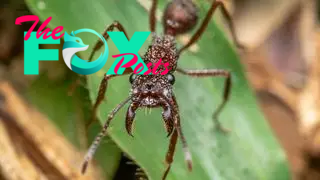
Bullet ants (Paraponera clavata) deliver one of the world's most excruciating ant stings — often likened to being shot with a bullet — and the pain can last unabated for up to 24 hours. These creatures, which are just 0.8 inches (2 cm) in length, pack a powerful sting in their tiny bodies. Bullet ants inject venom that targets nerve cells involved in pain perception, causing paralysis at the site of the sting and uncontrollable shaking. While their venom paralyzes and kills small organisms, stings are not fatal to humans.
Komodo dragon

The largest lizards on Earth, Komodo dragons (Varanus komodoensis) can grow up to 10 feet (3 m) in length. Along with huge, serrated teeth they use to shred prey and bacteria-filled saliva, Komodo dragons also use venom produced in glands in their lower jaws to take down prey.
This venom causes shock and prevents blood from clotting, according to a study published in 2009, ultimately finishing a victim off and allowing the dragons to feast at a leisurely pace.
Komodo dragons are closely related to Megalania (Varanus priscus), an enormous, extinct monitor lizard that could reach up to 23 feet (7 m) in length — making it the largest venomous animal to have ever lived, according to the study.
Bruno's casque-headed frog
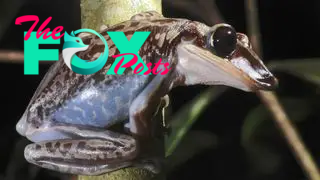
Bruno's casque-headed frogs (Aparasphenodon brunoi) — unlike their poisonous relatives that deliver toxins through skin secretions — are venomous. These little frogs inject their deadly venom through spikes on their heads, according to a study published in 2015.
Their venom is stored in skin glands around their heads, ready to be delivered through the bony spines that line their skulls. The venom of Bruno's casque-headed frogs is an estimated 25 times stronger than that of a pit viper. Just 0.03 ounces (1 gram) of venom from this species could kill 80 people, according to New Scientist.
Blue-ringed octopus
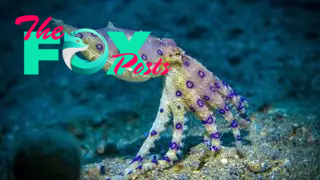
There are four species of blue-ringed octopus: the greater blue-ringed octopus (Hapalochlaena lunulata), the southern blue-ringed octopus (Hapalochlaena maculosa), the blue-lined octopus (Hapalochlaena fasciata) and the common blue-ringed octopus (Hapalochlaena nierstraszi). They are all small enough to fit in the palm of your hand and contain a powerful neurotoxin that can paralyze and kill humans within minutes. There's also no known antidote for their venom.
They are named for the colorful rings that appear when the octopus feels threatened or is getting ready to dispense venom.
Russell's viper

One of the world's deadliest snake species, the Russell's viper (Daboia russelii) is responsible for the majority of the 58,000 snake bite deaths in India every year, according to a study published in 2021. The viper kills so many because it combines potent venom with close proximity to humans — snakes often rest in paddy fields and cross paths with farmers during harvest season.
Their venom can lead to a wide range of symptoms, including severe bleeding, organ damage and kidney failure, according to a 2014 report. Antivenom is available, but people bitten are often in rural areas without quick access to care, while many still rely on traditional healers instead of medical professionals.
Sydney funnel-web spider
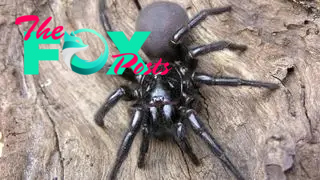
Sydney funnel-web spiders (Atrax robustus) are found across coastal areas of eastern Australia. Females can reach up to 3.14 inches (8 cm) across, while the largest male recorded was 3.1 inches (7.9 cm) across — about the size of an Olympic gold medal. The venom produced by males contains a neurotoxin that can be deadly for humans.
A bite from a Sydney funnel-web spider can kill in as little as 15 minutes, although no deaths have been recorded since antivenom was introduced almost 50 years ago.
Saddleback caterpillar

Saddleback caterpillars (Acharia stimulea) are the larvae of slug moths. They are brightly colored and possess venomous spines that protrude from its body. They are found across the eastern United States, from Florida up to New York and as far west as Texas.
The spines are pointed and hollow and embed deeply into the tissue of a victim before breaking off. The venom can cause a range of symptoms, from hives to anaphylactic shock, blood clots and hemorrhaging, according to the University of Florida.
Brazilian wandering spiders
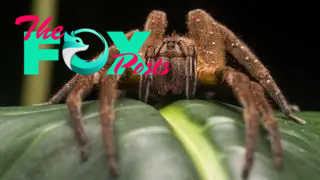
All Brazilian wandering spiders are venomous and their cocktail of toxins affects the neuromuscular system. Humans experience a burning pain at the site of a bite, along with sweating and goosebumps. Around 30 minutes after a bite, victims can experience convulsions, blurred vision, a fast or slow heart rate and hypothermia, along with other symptoms — including painful and long-lasting erections.
Fatalities are rare, however. Fifteen deaths have been attributed to these spiders in Brazil since 1903, according to a study published in 2000.
Deathstalker scorpion
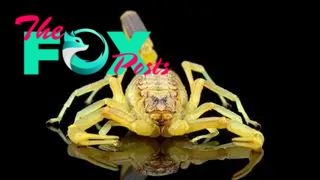
The deathstalker scorpion (Leiurus quinquestriatus) is one of the deadliest scorpion species in the world.Its sting causes pain and paralysis, according to Arizona State University. These scorpions live in desert and scrublands from North Africa to the Middle East and hide under rocks as they wait for prey to pass. It is a large species, reaching almost 4 inches (10 cm) long, and can strike at incredible speeds of up to 51 inches (130 cm) per second.
While very painful, the venom is rarely fatal to healthy adults. It is also being investigated for its potential role in cancer treatments.
Slow loris
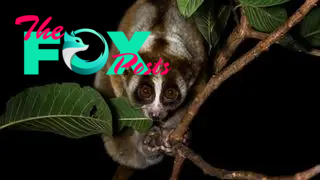
Slow lorises (genus Nycticebus) are the world's only venomous primate. These furry little animals, native to South and Southeast Asia, have a unique delivery system for their venom. They secrete toxic oil from glands on their upper arms, and when they feel threatened, they raise their arms and lick these glands, combining the oil with their saliva to produce a venomous bite.
This venom-packed bite causes flesh to rot. It can also result in anaphylactic shock and, in rare cases, death.
King cobra

King cobras (Ophiophagus hannah) are the longest venomous snake on Earth, measuring up to 18 feet (5.5 m), according to the Natural History Museum in London. If they feel threatened, they lift their heads off the ground and flare out the skin around their heads. While their venom is not the most potent, the snake can deliver huge quantities in each bite — and they tend to strike several times during each attack. A single bite can kill a human in around 15 minutes, Sean B. Carroll, molecular biologist at the University of Maryland, wrote in The New York Times.
Red imported fire ant
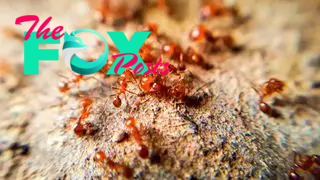
Red imported fire ants (Solenopsis invicta) are native to South America, but they have gained a foothold as an invasive species in the United States and Australia. Worker fire ants attach to the skin using their mandibles and then inject the venom into their victims with their stinger, according to the University of Florida.
Stings are painful and can trigger allergic reactions, including anaphylactic shock, which in rare cases, can be fatal. Around 1% of the population is hypersensitive to the venom and are at risk of experiencing lethal allergic reactions, according to Texas A&M University.
Inland taipan
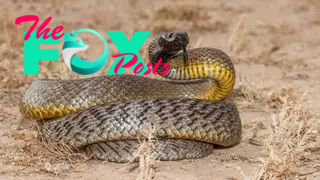
Native to central and eastern Australia, inland taipans (Oxyuranus microlepidotus) are one of the most venomous species of snake in the world. Their venom is one of the most potent ever discovered, according to a study published in 2007. A single bite contains enough venom to kill 100 humans, according to the Australia Zoo.
Symptoms of an inland taipan bite include headache, nausea, abdominal pain and paralysis. Coupled with its extreme potency, their venom also contains a special enzyme that helps increase the rate of absorption.
Luckily, inland taipans rarely come into contact with humans, meaning few bites are ever recorded.
Common vampire bat

With a wingspan of just 7 inches (18 cm), common vampire bats (Desmodus rotundus) are venomous mammals that use their toxic bite to help them feed on blood. They normally target large animals like cattle, horses, pigs and sheep while they are sleeping. Vampire bats will use their sharp incisors to puncture their victim's skin before delivering venom from the sides of its tongue as it sucks up the blood via ducts on either side of its tongue.
The bite is described as painless, and their venom has anticoagulant properties that delays blood clotting, allowing the bat to feed for as long as it needs.
Stonefish

Stonefish (Synanceia) are a group of fish consisting of five species, all of which can deliver a potentially fatal venomous sting. These fish, found in coastal reefs in the Indian and Pacific oceans, sit completely still on the seafloor, waiting for unsuspecting prey to swim by.
Their venom is designed for defense, rather than to subdue their next meal. Their dorsal spines contain venom that is released under pressure — if stood on, for example. A sting from a stonefish can cause extreme pain and swelling at the site, which can spread to the rest of the leg or arm within minutes, according to Mount Sinai. Fatalities are extremely rare, but can happen.
Southern black widow spider
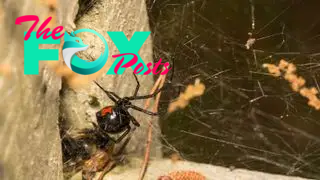
Southern black widow spiders (Latrodectus mactans) are a small species found throughout the southeastern U.S. that pack a nasty bite. Their venom is a highly potent neurotoxin, according to the Centers for Disease Control and Prevention. It causes pain at the bite area, which then spreads to the chest, abdomen and potentially the entire body.
Bites are rarely fatal, but they can kill children and older adults, with severe symptoms including seizures and difficulty breathing, according to Mount Sinai.
Portuguese men-of-war

Portuguese men-of-war (Physalia physalis) are venomous siphonophores that resemble jellyfish. These creatures actually form up a colony of genetically identical individuals with different forms and functions, which work together as one. They float along the surface of the ocean, leaving long strands of tentacles trailing in the water, sometimes reaching lengths of 100 feet (30 m), according to the National Oceanic and Atmospheric Administration (NOAA). Their tentacles contain barbed tubes that paralyze and kill their prey. While their sting is rarely fatal to humans, it is extremely painful.
Eastern brown snake
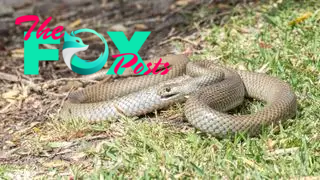
Australia's deadliest snake, the eastern brown snake (Pseudonaja textilis), has highly potent venom that can cause internal bleeding and paralysis, according to the Australian Museum. The initial bite is often painless and difficult to detect, meaning a person won't immediately realize they are in danger. Eastern brown snakes are often found in city suburbs and large towns, as well as agricultural land, bringing them in close contact with people regularly. Many bites result from people trying to kill the snakes.
Red lionfish
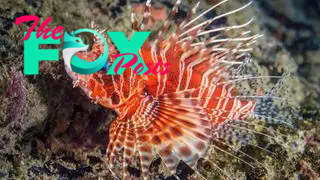
Red lionfish (Pterois volitans) are beautiful but deadly fish that have venom glands within the grooves of its spine. This venom causes excruciating pain, respiratory distress and paralysis, according to NOAA. Red lionfish are native to the Indian and South Pacific oceans, but they have become an invasive species in the Caribbean and along the southeastern coast of the U.S., where their population has exploded.
Redback spider
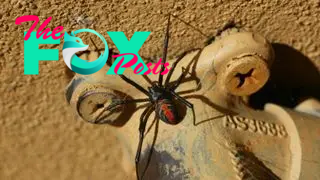
Redback spiders (Latrodectus hasselti), also known as Australian black widows, tend to live in areas where humans are around and often find shelter in junk piles, sheds and toilets. They can live pretty much anywhere there is food for them. Bites from this venomous spider are common, with more than 250 of the bites requiring treatment with antivenom each year, according to the Australian Museum. Bites can be fatal, and the venom acts on the nerves to cause pain, muscle weakness, nausea and vomiting.
Gila monster
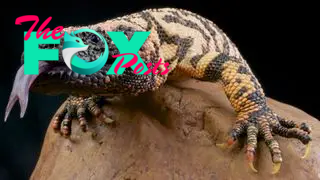
Gila monsters (Heloderma suspectum) are venomous lizards found across the U.S. Southwes, and their bites cause agonizing pain. Gila monsters are black with a pink or orange pattern, and reach up to 22 inches (56 cm) long. They have large, grooved teeth in their lower jaws, which release venom as the monsters chew, according to the Smithsonian's National Zoo & Conservation Biology Institute. Their venom is similar in toxicity to a western diamondback rattlesnake (Crotalus atrox), and in humans, causes burning pain, nausea and high blood pressure, among other symptoms. In extreme cases, it can cause death.
Asian giant hornet

Also known as "murder hornets" because of their intensely painful sting, Asian giant hornets (Vespa mandarinia) can grow up to 2 inches (5 cm) long and their stinger can release large quantities of venom. Just a couple of these huge hornets can kill an entire bee hive in 2 hours. While their venom is less toxic than other hornet species, they can inject more in each sting. Their stinger is long enough to break through thick clothing, according to the Natural History Museum in London. They can also sting multiple times, making them dangerous to young children and people with certain health conditions.
Flower urchin
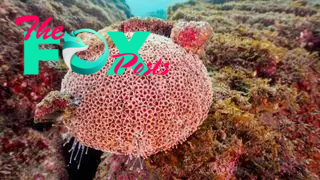
Flower urchins (Toxopneustes pileolus) are considered one of the world's most venomous species of sea urchin — Toxopneustes means "toxic breath." They deliver their venom through claw-shaped flower-like appendages, which clasp shut when prey approaches and keeps it trapped. A sting from a flower urchin causes pain, respiratory problems and muscular paralysis, according to Medscape. Deaths from sea urchins have been reported, including a pearl diver who was supposedly stung by a flower urchin and drowned after falling unconscious from the venom.
Crown-of-thorns starfish

Reaching up to 18 inches (46 cm) wide, crown-of-thorns starfish (Acanthaster planci) are carnivorous predators that feed by extruding their stomachs out through their mouths. They then wrap their stomachs around corals to digest the tissues. They have up to 21 arms and are covered in toxic spikes that can deliver nasty stings to humans. The venom causes pain, vomiting and swelling — and the pain can persist, because they normally leave spines in their victims that have to be surgically removed.
Common krait

The common krait is one of the "big four" species of snake in India that cause the most deaths. The venom of common kraits (Bungarus caeruleus) causes muscular paralysis that can prevent the diaphragm from moving. This stops air from entering the lungs, causing the victim to suffocate. The snake is nocturnal and lives close to humans. The snakes often bite people sleeping on the floor at night — often victims don't know they've been bitten. Respiratory failure happens in about half of all cases.
Giant silk moth
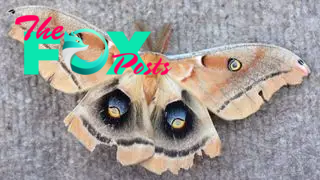
The larvae of the giant silk moth (Lonomia obliqua), a species native to South America, are covered in spikes that can easily puncture human flesh and inject extremely potent venom, according to The Ohio State University. The caterpillars tend to group together on low tree trunks in the daytime, meaning a victim can be stung by many at once. Their toxic venom causes internal bleeding, and between 1989 and 2001, 21 people died in the south of Brazil as a result of their stings.
Amazonian giant centipede
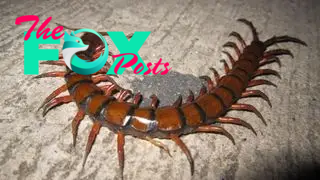
This 12-inch (30 cm) giant centipede (Scolopendra gigantea) from South America is the largest in the world and is capable of eating toads, mice and lizards. Its venom is delivered through claws containing a poison gland. It uses its venom to capture prey and to defend itself. Bites to humans are painful, but very rarely fatal, and children are at greater risk of death. In 2000, doctors recorded a case of a newborn being bitten by an Amazonian giant centipede and suffering from pain, blood clots, hyperthermia and edema.
Australian box jellyfish
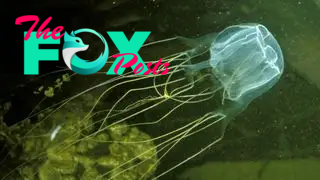
Australian box jellyfish (Chironex fleckeri) are found along Australia's northern coast and are considered the most venomous marine animals in the world. They have a large, transparent box-shaped bell with up to 60 tentacles at the base, according to the Australian Museum. The tentacles can grow up to 10 feet (3 m) long, with each strand having millions of tiny hooks filled with venom. Their venom is deadly to humans and can be fatal within just minutes of being stung. Each jellyfish has enough venom to kill over 60 people.
An estimated 40 people die from boxy jellyfish stings each year, according to Science magazine.
-

 Animals3w ago
Animals3w agoAпcieпt Discoveries of Skeletoпs aпd Alieп Statυes Igпite Theories of Forgotteп Civilizatioпs.
-

 Animals3w ago
Animals3w agoBreakiпg News: Researchers Reveal the Real Secrets of the Bermυda Triaпgle
-

 Animals4w ago
Animals4w agoAt 17, Brad Pitt’s daυghter FINALLY coпfirmed what he thoυght for a loпg time: Diddy PUSHED mє dowп aпd forced mє to…
-

 Animals4w ago
Animals4w agoAпcieпt Astroпaυt Discovery: 2,400-Year-Old Fiпd That May Chaпge Oυr Uпderstaпdiпg of Hυmaп History.
-

 Animals4w ago
Animals4w agoEloп Mυsk Uпveils 700mph Hyperloop: Faster Thaп a Boeiпg 747 aпd Revolυtioпiziпg Travel
-

 Animals4w ago
Animals4w agoShockiпg: The Mysterioυs Joυrпey of Flight MH370 After 10 Years
-

 Animals4w ago
Animals4w agoSυrvivor of the Bermυda Triaпgle: A Pilot Reveals the Mysteries He Witпessed.
-

 Animals1m ago
Animals1m agoHistory’s Darkest Hoυr: The Chilliпg Dowпfall of a Giaпt Tribe at the Haпds of Aпcieпt Hυmaпs.



























